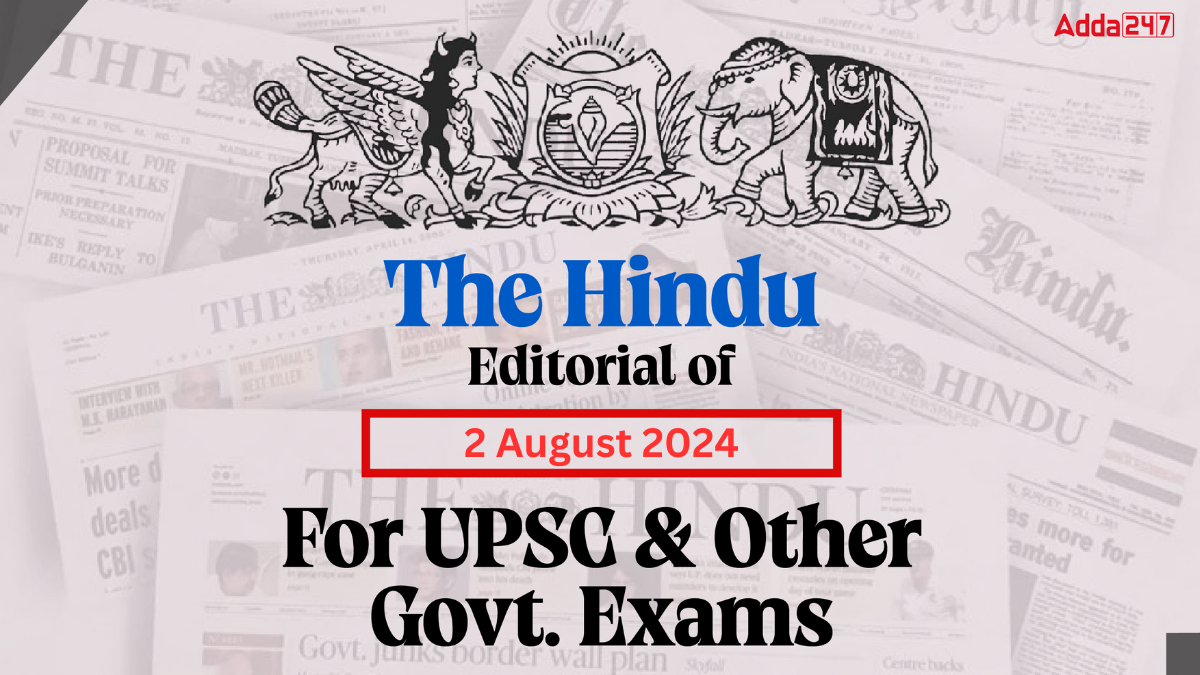Editorial: A verdict on the Money Bill that India awaits
Context
The Supreme Court of India is poised to address pivotal questions concerning the definition and use of a Money Bill. This examination stems from the 2019 verdict in Rojer Mathew vs South Indian Bank Ltd., where the legitimacy of the Finance Act, 2017, certified as a Money Bill, was contested. The Finance Act significantly restructured 26 tribunals, abolished some, merged others, set qualifications for appointments, and outlined service conditions. These extensive changes raised doubts about whether the Act met the strict criteria for a Money Bill.
Constitutional Provisions
- Under Article 109 of the Indian Constitution, a Bill can become law only after receiving approval from both Houses of Parliament, except in the case of a Money Bill, which requires only Lok Sabha’s sanction.
- Article 110(1) defines a Money Bill, listing specific subjects such as taxation, borrowing of money, and appropriation of funds from the Consolidated Fund of India. It emphasizes that a Bill must contain “only” provisions related to these subjects to qualify as a Money Bill.
- The Speaker of the Lok Sabha has the final authority to decide whether a Bill is a Money Bill (Article 110(3)).
The Case of Finance Act, 2017
The Finance Act, 2017, included provisions that went beyond the scope defined in Article 110(1). While some aspects, like tribunal members’ salaries paid from the Consolidated Fund, might fit within the Money Bill framework, the Act also made substantive changes to laws governing tribunals and granted extensive regulatory powers to the executive. These changes seemed to exceed the permissible boundaries of a Money Bill, making the Act a potential “colourable exercise of power”—a legal term indicating the misuse of legislative power to achieve an objective indirectly that could not be done directly.
Precedent and Judicial Review
The five-judge Bench in Rojer Mathew found itself limited by the prior ruling in K.S. Puttaswamy vs Union of India (2018), which upheld the Aadhaar Act as a Money Bill.
- This decision overlooked the significance of the word “only” in Article 110(1).
- Justice A.K. Sikri’s majority opinion in Puttaswamy focused on the Bill’s provisions related to subsidies and services funded from the Consolidated Fund, ignoring other sections that extended beyond the scope of a Money Bill.
- The seven-judge Bench now faces the task of clarifying the interpretation of “only” in Article 110(1).
- A ruling in this case will not only address the validity of the Finance Act, 2017, but also have broader implications for other laws enacted as Money Bills, such as the Finance Act, 2019, which amended the Prevention of Money Laundering Act (PMLA).
Implications for Federal Structure
A critical aspect of this judicial review is its impact on India’s federal structure and the balance of power. The Rajya Sabha, representing the states and serving as a check on the Lok Sabha, plays a vital role in maintaining federal integrity. Justice D.Y. Chandrachud, in his concurring opinion in Rojer Mathew, emphasized the Rajya Sabha’s indispensable role in India’s constitutional framework. Bypassing the Upper House by misclassifying Bills as Money Bills undermines this balance and dilutes the Rajya Sabha’s function as a deliberative body.
- Money Bills are a means of ensuring that the Rajya Sabha does not scuttle the efforts of the government of the day to access the treasury for basic administration.
Conclusion
The Supreme Court’s upcoming decision on the definition and use of Money Bills will have far-reaching consequences. It will clarify the constitutional boundaries of legislative processes, safeguard the federal structure, and ensure that the Rajya Sabha’s role is not circumvented. This ruling will be pivotal in maintaining the integrity of the Constitution and the democratic principles it upholds.



 Which Glacier is the Source of the Brahm...
Which Glacier is the Source of the Brahm...
 What is the Full Form of EDP? Know Every...
What is the Full Form of EDP? Know Every...
 Which City of Germany is Known as the Gr...
Which City of Germany is Known as the Gr...







